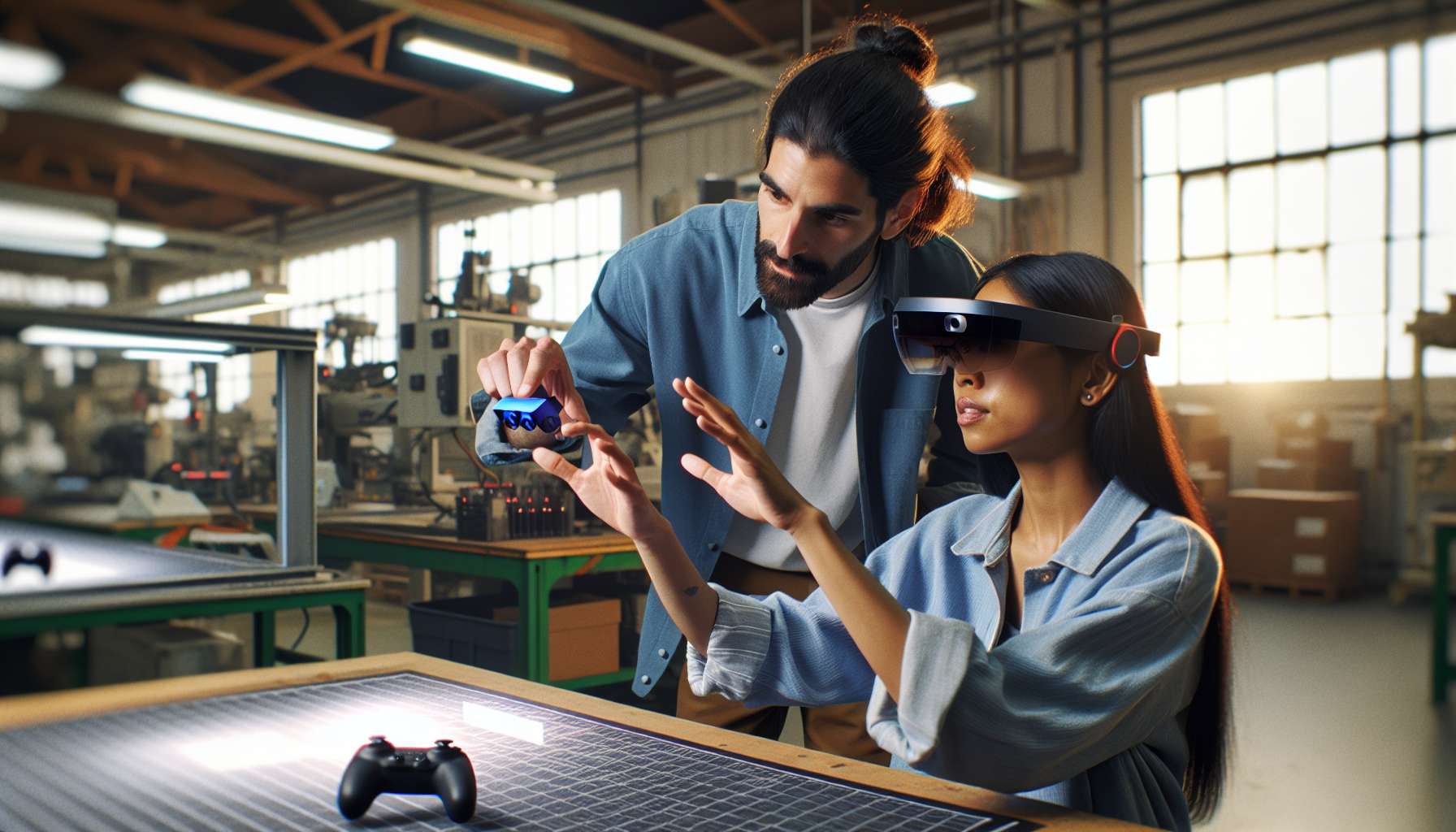Unlocking Efficiency: How Augmented Reality is Streamlining Manufacturing Processes
Manufacturing has always been a complex and intricate process, requiring meticulous attention to detail and precise assembly of various components. However, with the advent of augmented reality (AR), the manufacturing industry is experiencing a revolutionary transformation. AR technology is not only enhancing productivity but also improving accuracy, reducing errors, and ultimately streamlining complex product assemblies.
What is Augmented Reality?
Before we delve into the role of AR in manufacturing, let’s briefly understand what augmented reality is. Augmented reality is a technology that overlays digital information, such as images, videos, or 3D models, onto the real world. By using AR-enabled devices, such as smart glasses or mobile devices, users can interact with virtual elements while still being aware of their physical surroundings.
The Benefits of AR in Manufacturing
1. Enhanced Training and Onboarding: AR provides an immersive and interactive training experience for new employees. By overlaying step-by-step instructions and visual cues onto physical objects, AR enables workers to quickly learn complex assembly processes. This reduces the time required for training and minimizes errors during the initial learning phase.
2. Real-time Guidance: AR technology can guide workers through complex assembly procedures in real-time. By projecting digital instructions onto the physical workspace, AR ensures that workers follow the correct sequence of steps, use the right tools, and avoid potential errors. This real-time guidance significantly improves efficiency and reduces the need for constant supervision.
3. Error Reduction: Mistakes in product assembly can be costly and time-consuming. AR helps minimize errors by providing workers with visual cues, highlighting potential issues, and offering immediate feedback. This proactive approach to error prevention saves both time and resources, resulting in higher-quality products and increased customer satisfaction.
4. Remote Assistance: AR enables remote experts to provide real-time assistance to on-site workers. By sharing their expertise through AR-enabled devices, experts can guide workers through complex tasks, troubleshoot issues, and ensure that assembly processes are executed correctly. This remote assistance capability eliminates the need for experts to travel to different locations, saving time and reducing costs.
Real-world Examples
Several companies have already embraced AR technology to streamline their manufacturing processes:
- BMW utilizes AR glasses to guide workers during the assembly of complex vehicle components. This has resulted in a significant reduction in errors and assembly time.
- General Electric uses AR to train technicians in the assembly and maintenance of industrial equipment. This has led to faster onboarding and improved efficiency.
- Lockheed Martin employs AR to assist technicians in the assembly of aerospace components. This has reduced errors and improved overall productivity.
The Future of AR in Manufacturing
The potential of AR in manufacturing is vast and promising. As the technology continues to evolve, we can expect even more advanced features and applications. Here are some future possibilities:
- Integration with Artificial Intelligence: AR combined with AI algorithms can analyze real-time data from sensors and provide predictive maintenance alerts, optimizing equipment performance and reducing downtime.
- Collaborative Workspaces: AR can enable multiple workers to collaborate on complex assembly tasks, even if they are physically located in different places. This virtual collaboration can enhance efficiency and foster knowledge sharing.
- Quality Assurance: AR can be used to perform real-time quality checks during the assembly process, ensuring that products meet the highest standards. This can help identify defects early on and prevent costly rework.
As the manufacturing industry continues to embrace digital transformation, augmented reality is proving to be a game-changer. By streamlining complex product assemblies, AR is unlocking new levels of efficiency, reducing errors, and empowering workers with real-time guidance. The future of manufacturing is augmented, and those who embrace this technology will undoubtedly gain a competitive edge in the market.





